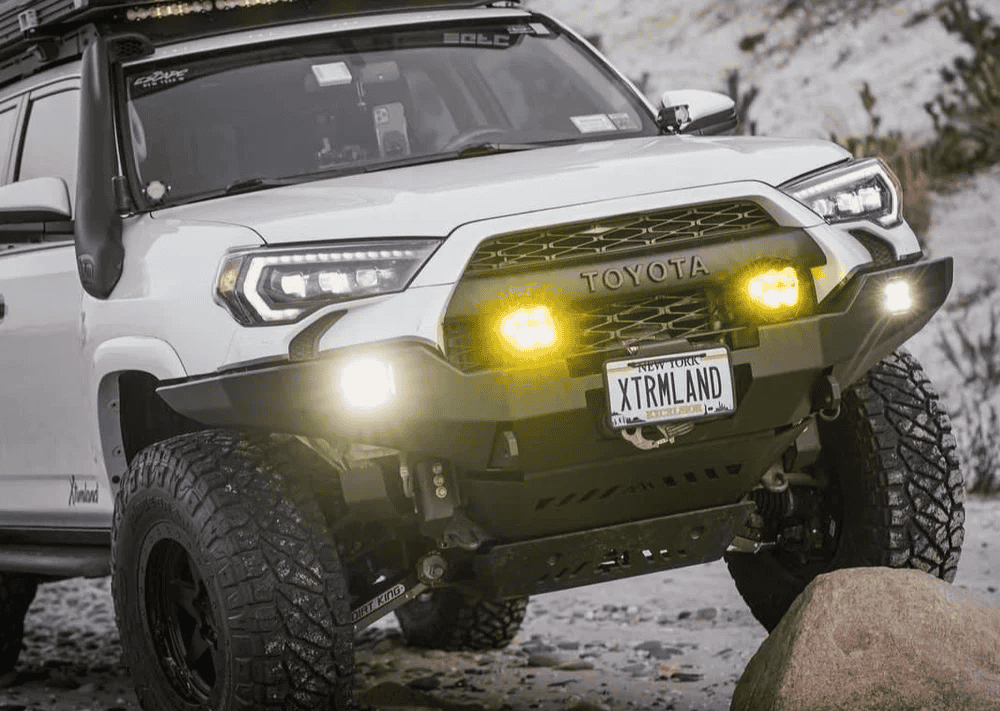Overland Vehicles

A Bronco overland platform is a Bronco set up for self sufficient travel on dirt, rock, and everything between with reliable systems for sleeping, cooking, and power. The heart of the project is balance. You want traction and clearance without overloading the suspension, storage that keeps essentials secure, and electrical that runs a fridge and lights while preserving the starting battery. Success is measured by how predictable the vehicle feels after hours of washboard, not by the parts list.
Start with honest payload math. Weigh the truck ready to travel with passengers, fuel, and the gear you already own. Subtract that number from the gross vehicle weight rating listed on the door jamb to find remaining capacity for accessories. Every pound matters. Roof loads should be treated carefully because they raise the center of gravity and can compromise handling. Choose racks rated for your roof type and keep the heaviest items down low.
Tires are the most important traction upgrade. All terrain tires in a true 33 inch size fit many trims with minimal fuss and work well for long pavement stretches and gravel. If you run a 35, make sure the gearing and spare storage plan match, and verify clearance at full stuff and full lock. Air down to expand the contact patch and protect the vehicle from sharp impacts, then add onboard air so you can air back up before the highway.
Suspension choices should be modest and purposeful. Focus on damping control and load support rather than lift height. Quality coilovers or tuned shocks can calm corrugations and keep tires planted. Overly tall lifts reduce uptravel and can stress components. Aim for a stance that maintains factory geometry while making room for your chosen tire.
Protection is trail insurance. Skid plates shield the engine, transmission, transfer case, and fuel tank from ledges and hidden rocks. Rock rails defend the sills and can serve as a pivot point in tight canyons. A high clearance front bumper that retains airflow and sensor function pairs well with a properly sized winch.
Plan power like a tiny home. A dedicated house battery, often lithium with a DC to DC charger, allows you to run a fridge, lights, and device charging without touching the starter battery. Add a compact solar array to offset idle loads during camp days. Keep wiring loomed, fused, and serviceable, and place switches where you can reach them with gloves.
Use drawers or a flat load deck to create a level surface for totes and recovery tools. Keep heavy items between the axles and as low as possible. Quick access matters. A tailgate table, rear cargo lighting, and MOLLE panels make cooking and camp setup simple. Water storage should be secure, vented, and easy to refill.
Match your recovery gear to vehicle weight. A winch rated at least one and a half times curb weight with synthetic line, soft shackles, a tree saver, and a recovery ring covers most scenarios. Add traction boards for sand or snow and pair them with a quality shovel. Recovery points must be frame mounted and rated.
Two door and four door Broncos ask for slightly different packaging. The shorter wheelbase turns tighter and can crest breakovers with less scraping, but storage volume is limited. Use compact fridges and folding kitchen kits, and consider a narrow drawer system. The four door offers more room for a sleep platform, water, and a full tool kit, which can reduce roof cargo and improve stability.
Locker and tire packages from the factory are an advantage on slow, technical trails. For mixed travel that includes long distances and variable weather, a tire that balances snow and wet road performance with dirt traction is worth the tradeoff in ultimate rock grip. Lighting should favor wide, low glare patterns that reduce fatigue on long night approaches. Communication upgrades like GMRS keep a group connected, while satellite messaging adds a safety net beyond cell service.
Keep serviceability in mind. Filters, belts, and fluids should be easy to reach. Protect sensors and camera wiring during installs. Verify that accessory placement does not block hood openings, radiator airflow, or the camera in the grill. After any significant change, perform an alignment and retorque hardware after the first few hundred miles of travel.
When you are ready to translate this plan into a dialed Bronco, our team can design and install the full system. Explore our overland rigs to see how we pair protection, storage, and power that travels well in real conditions. If you want a tailored package for your use case, our custom overland upfit process maps your route, payload, and timeline into a cohesive build. Curious how the experience feels end to end? See what sets us apart on why choose OZK Customs.
We build in Fayetteville Arkansas, a perfect shake down zone with fast access to dirt and river country. Tell us how you travel, and we will blueprint your Bronco overland platform around your priorities, then deliver it tested and trail ready. Your next campsite should feel simple, safe, and quiet. Let’s get you there.
Ready to turn your Bronco into a proven overland platform? Our team designs and installs protection, power, storage, and lighting that work together on the trail. Tell us how you travel, and we will spec, build, and test your setup so pickup day feels like a sendoff, not a science project. Start your Bronco build consult today.
ADDRESS:
6159 E Huntsville Rd, Fayetteville, AR 72701
PHONE:
(479) 326-9200
EMAIL:
info@ozkvans.com